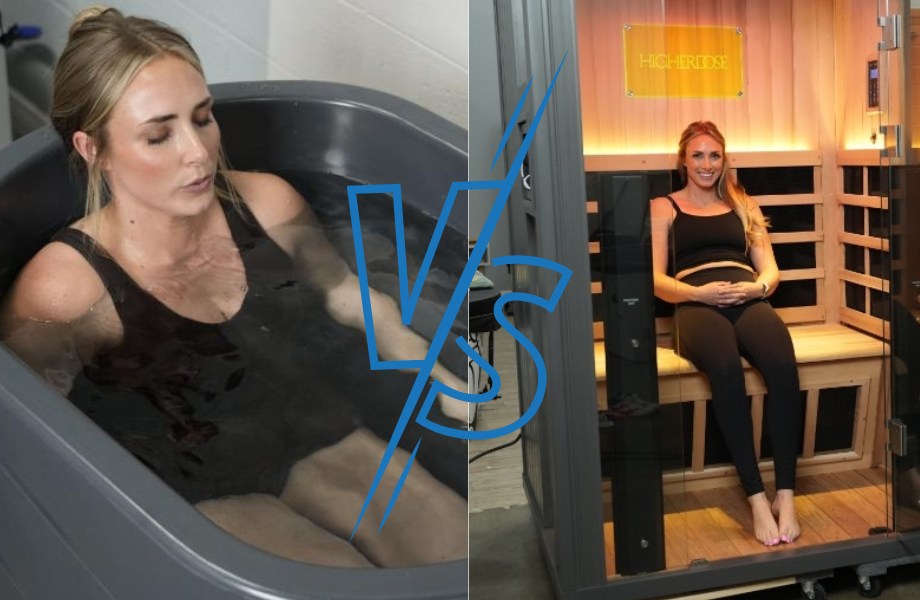We test and review fitness products based on an independent, multi-point methodology. If you use our links to purchase something, we may earn a commission. Read our disclosures.
If you’re a runner, weightlifter, athlete, or like to do a mix of everything, post-workout recovery is a vital part of your fitness journey. Neglecting your recovery can leave you feeling constantly sore, tired, and beat up from your training, while prioritizing your recovery can help you start each workout feeling refreshed and ready to go.
Cold plunges and saunas have become popular recovery tools in recent years. If you’re considering adding one to your home gym, it’s important to choose the right option.
Both are forms of hormetic stress, which is the “good” kind of stress that can help improve your health and well-being over time, similar to regular exercise, but it’s not always clear which is the better choice.
In this cold plunge vs sauna guide, I’ll explain the differences between the two, discuss the benefits of saunas and cold plunges, describe the physiological responses to both, and help you decide which one is right for your recovery needs.
Medical disclaimer: This article is intended for educational and informational purposes only. It is not intended as a substitute for medical advice. For health advice, contact a licensed healthcare provider.
What Is a Cold Plunge?
A cold plunge is exactly what it sounds like–a tool for submerging one’s body in cold temperatures for brief periods of time.
You may know them as ice baths, which athletes often use to cool down after a tough practice. Many still use ice, but these days, the best cold plunges contain built-in coolers, eliminating the need to buy large quantities of ice every time you want to cool your water.
The exact temperatures used can vary, but many prefer to plunge into water that’s 53 to 60 degrees Fahrenheit and stay submerged for anywhere from 2 to 10 minutes. Beginners can certainly start with as little as 30 seconds.
RELATED: How to Cold Plunge
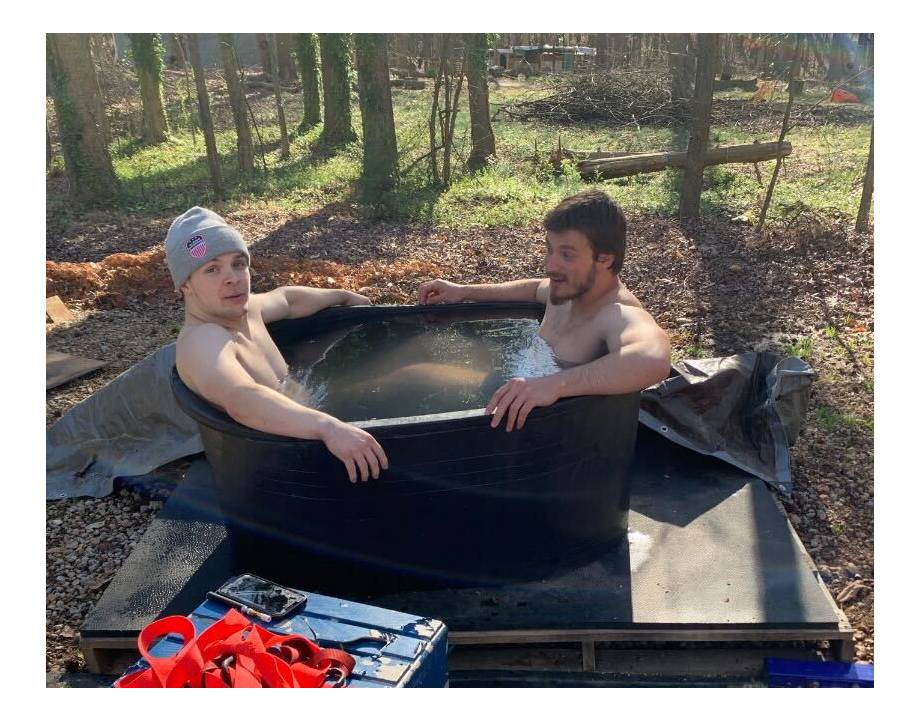
If you’ve ever used an ice pack on an injury to bring down swelling and inflammation, a cold plunge has the same effect…on your entire body. Cold temperatures generally cause blood vessels to contract, which temporarily reduces blood flow, but it will return once you warm up.
Cold plunges also release endorphins, hormones that can improve mood and focus, though many experience a similar benefit from cold showers.
Benefits of Using a Cold Plunge
While submerging your body into a giant tub of ice water may sound very unpleasant, there are several reasons to consider using one, especially if you regularly perform intense exercise.
Here are a few ice bath benefits to consider that may help you push through your discomfort, embrace the cold, and establish a regular cold plunge routine.
May Reduce Inflammation
One of the most common uses of cold therapy is reducing inflammation and swelling through vasoconstriction, which reduces the blood flow and circulation to the cold area. If you’ve ever sprained an ankle, you’ve probably spent time with an ice pack trying to relieve the pain.
Icing injuries is traditionally done to bring down pain and swelling. In theory, cold plunges should have this effect on your entire body. As it turns out, this may indeed be true.
A 2010 study1 found that cold water immersion was more effective than ice packs and ice massage at reducing motor nerve conduction from the chilled area, which helped reduce the sensation of pain.
May Improve Exercise Recovery and Decrease Soreness
Many people use cold plunges to improve recovery and decrease muscle soreness after a hard workout. While they can certainly reduce soreness due to the cold’s partial numbing effect, the research is mixed on long-term benefits.
Some research2 also shows that cold plunges can reduce inflammation and delayed-onset muscle soreness, but they don’t seem to be any more effective than other forms of active recovery.
May Support Weight Loss
One potential response to cold exposure is nonshivering thermogenesis, which stimulates blood flow to brown adipose tissue, a type of body fat that helps regulate body temperature. Cold exposure also releases norepinephrine from the nervous system. Norepinephrine is a neurotransmitter associated with the fight or flight response that can increase lipolysis4, or the breakdown of fatty acids.
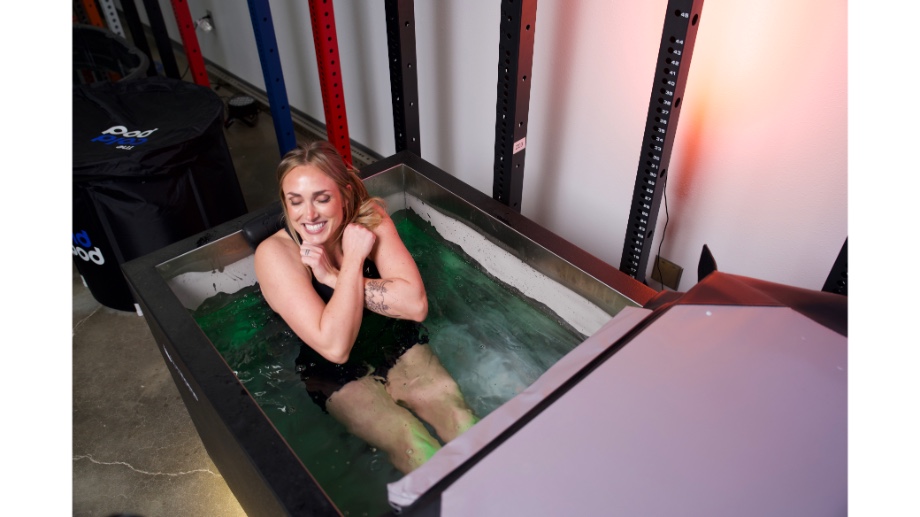
It’s probably a stretch to say that a daily cold bath will magically burn significant body fat, but it may have a small impact. This 2019 study5 found that cold exposure may increase energy expenditure, as well as support healthy blood glucose levels, insulin sensitivity, and lipid metabolism.
Drawbacks of Using a Cold Plunge
If your primary goals involve building strength and muscle, you may want to reconsider your cold plunge use. A 2015 study3 published in the Journal of Physiology compared cold water immersion to active recovery, which is light exercise to promote blood flow, over 12 weeks of resistance training.
The study found that cold water reduced long-term gains in muscle and strength, and blunted the activation of key proteins and satellite cells in skeletal muscle up to 2 days after strength exercise.
Dr. Michael Masi, DPT, SCS, CSCS, CISSN, USAW-1, supported these findings. He stated that inflammation is a natural response to working out and may aid recovery. If strength gains are your goal, reducing post-workout inflammation may actually slow down your progress.
Those with pre-existing cardiovascular conditions, or a history of heart disease, should speak with a doctor first, as rapid temperature changes may be dangerous.
What Is a Sauna?
A sauna, a Finnish word, is an enclosed room designed to seal in high temperatures using an internal heater. As with ice baths, sauna temperatures are adjustable and often vary, but most are set between 150 and 190 degrees Fahrenheit. The oldest saunas are found in Finland, dating back to 2000 B.C.
Like a warm-up before a tough workout, elevating your body temperature in a sauna can increase blood flow, improve blood circulation, and promote vasodilation. This increases blood flow throughout your body and may help with recovery from physical activity.
Saunas also trigger the release of heat shock proteins, which can support cellular function and cardiovascular health6.
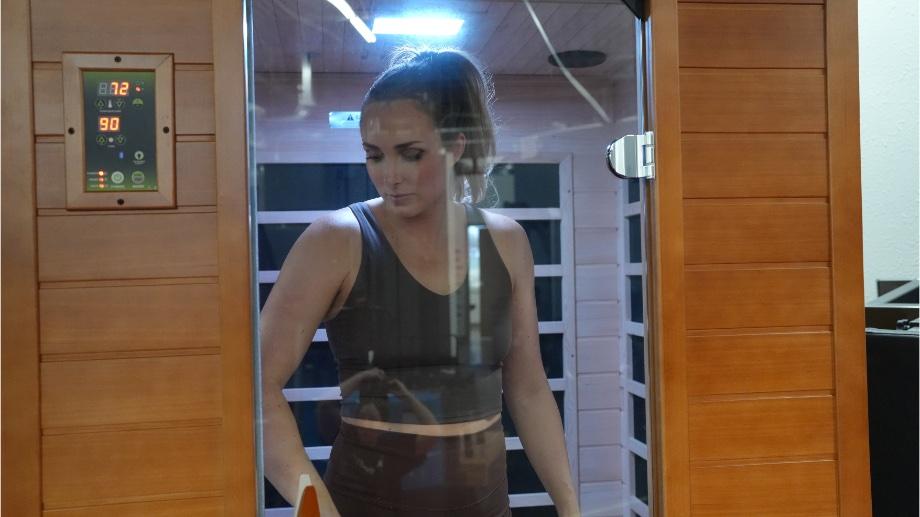
There are two main types of saunas: traditional saunas and infrared saunas.
In a traditional sauna, a heater raises the temperature of the entire room, while infrared saunas are generally a bit cooler. They rely on infrared light rather than external temperature to directly heat your skin and raise your core temperature, although the sauna will still be warm.
RELATED: Best Infrared Saunas
While cold plunges work by reducing inflammation and temporarily restricting blood flow to lower inflammation, using saunas can help your muscles relax and loosen up, resulting in improved circulation as your core body temperature increases. If you’ve never used a sauna, you can expect to sweat quite a bit, so be sure to pay close attention to your hydration.
Benefits of Using a Sauna
Saunas have been used for thousands of years, and many love how they feel after a sauna session. Aside from feeling good, what sort of benefits can a sauna provide? Many claim that regular heat exposure can boost the immune system, boost muscle recovery, improve detoxification, and more, but not all of these claims are backed by science.
Let’s take a look at the science and some of the most important health benefits you need to know about when it comes to fitness and recovery.
May Improve Cardiovascular Health
One of the most well-known benefits of heat therapy is improved cardiovascular health, as sitting in a sauna can improve your heart rate while your body tries to cool itself.
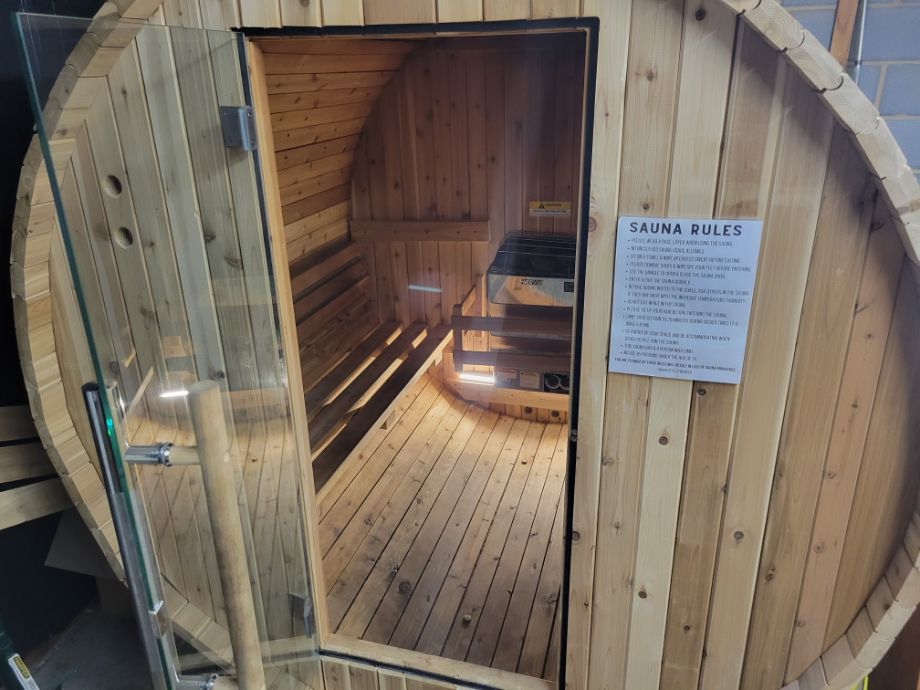
Research shows7 that while the exact mechanisms behind the benefits still need further research, regular dry sauna bathing was associated with improved cardiovascular health, including a reduced risk of heart failure, cardiac death, and all-cause mortality.
May Reduce Muscle Soreness
If you’re looking to maximize your recovery, you’re probably wondering just how much of an impact saunas can have.
As it turns out, the data is slightly mixed. Sauna use has been shown to reduce inflammation8, but as mentioned in the cold plunge research, inflammation may be an important part of long-term strength and muscle gains.
Another study found9 that sauna use significantly reduced delayed-onset muscle soreness (DOMs), but it’s worth noting that study participants were instructed to use the sauna before the exercise, so it’s unclear if a post-workout sauna session would have the same benefits.
May Increase Energy Levels
If you’re feeling run down and tired, a sauna might provide a boost of energy with regular use.
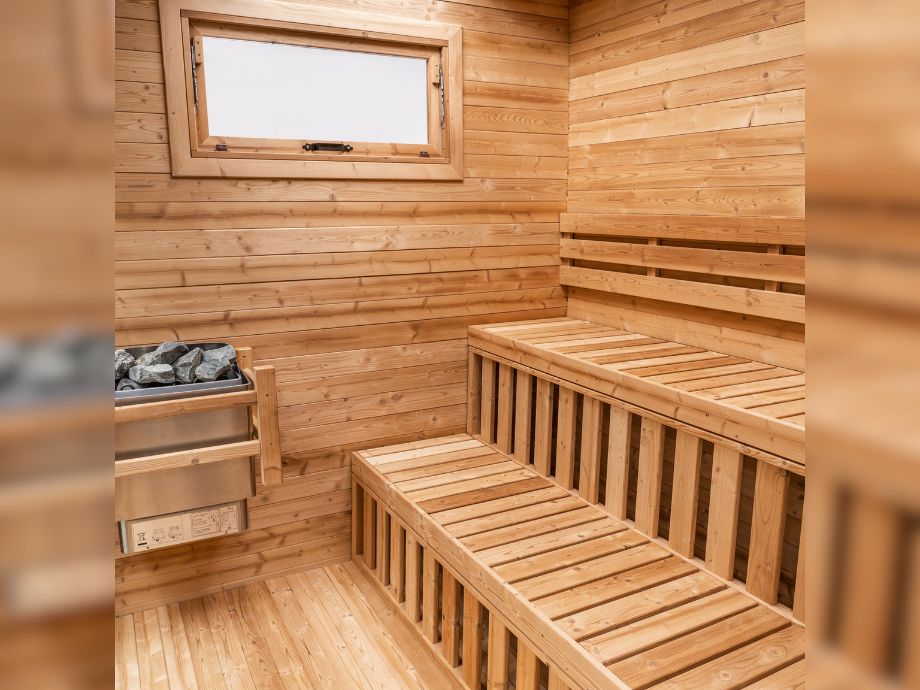
A 2015 study10 examined the effects of Waon therapy, which uses dry infrared saunas, on chronic fatigue, a constant feeling of low energy.
After four weeks of regular sauna use, participants experienced a reduction in perceived fatigue after the treatment, along with improved mental health, noting reduced feelings of anxiety and depression.
This doesn’t mean a sauna will provide the same energy boost as one of the best pre-workouts, but regular use may help over time.
Drawbacks of Using a Sauna
While saunas are beneficial, they’re not meant for everyone. If you have a history of any cardiovascular disease, high blood pressure, or any other pre-existing health conditions, you need to talk to a doctor first before stepping into a hot sauna, as extreme temperatures can be unsafe.
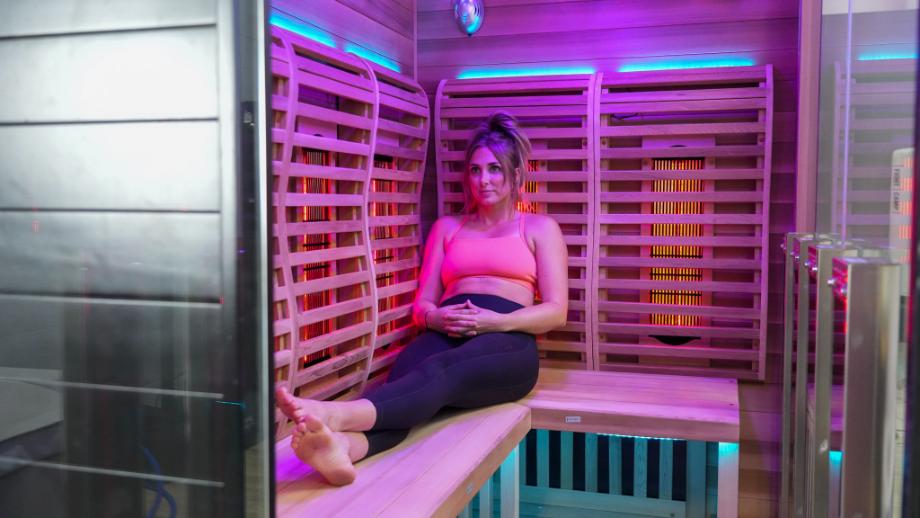
Because saunas increase your body temperature so much, you’ll also need to pay close attention to your hydration before, during, and after your sauna session. Losing too much fluid without proper replenishment can cause dehydration if you’re not careful.
How to Choose Between a Cold Plunge and Sauna
Both saunas and cold plunges can reduce inflammation and relieve pain and soreness, the two benefits most applicable to workout performance. With that in mind, here are a few things to help you consider which is the best option to add to your garage gym.
Of course, if you have the option to use both, you can alternate based on your preference. Some even enjoy using contrast therapy, which involves alternating between hot and cold therapy in the same session.
However, if you only have the space and/or budget to add one to your home gym, here are the most important factors to consider.
- Time commitment: Most users will not be in a cold plunge for more than 10 minutes and may only use it for 3-5 minutes, if not shorter. A cold plunge is the most time-efficient option if you regularly try to manage a busy schedule.
- Cold tolerance: Let’s face it, climbing into a large tub of ice-cold water isn’t going to be pleasant, while a sauna is much easier to tolerate. Your body may get used to the initial cold shock over time, but the initial plunge is always a bit of a shock. If you don’t want to have to work up the courage to use your recovery tool every time, a sauna may be the better option.
- Space: The best home saunas can take up quite a bit of space, as you need to create a space that can contain heat, and many resemble a small shed. On the other hand, a cold plunge is usually the size of a large barrel, and much easier to store and fit in a home garage.
Cold Plunge vs Sauna: Final Thoughts
Both cold plunges and saunas can support recovery by reducing inflammation and pain, relieving muscle soreness, and improving blood flow. Both may be beneficial to add to your health and wellness routine.
It’s worth another mention that regular cold plunge use can blunt the hypertrophy response, reducing your strength and muscle gains over time. However, if you’re primarily focused on cardio or aren’t worried about muscle growth, both cold plunges and saunas are a great way to reduce pain and inflammation after a tough workout.
Cold Plunge vs Sauna: FAQs
Is a cold plunge or a sauna better for you?
Both can be beneficial for improving exercise recovery and reducing inflammation. Cold plunges are generally better for relieving pain and inflammation, while saunas are better for improving blood flow and cardiovascular health.
Is a cold plunge really beneficial?
Cold plunges have been shown to reduce inflammation and the sensation of pain, but some research suggests that using them immediately post-workout may reduce muscle and strength gains over long periods of time. Your body’s response to cold exposure is a release of endorphins and various neurotransmitters that can improve focus, mood, and your overall sense of well-being.
Does a cold plunge burn fat?
A cold plunge can increase brown adipose tissue activation, or brown fat, a tissue that helps regulate body temperature and metabolism. This may have a small impact on fat loss, but significant fat loss is the result of following a proper nutrition and exercise program.
References
- Herrera, E., Sandoval, M. C., Camargo, D. M., & Salvini, T. F. (2010). Motor and sensory nerve conduction are affected differently by ice pack, ice massage, and cold water immersion. Physical therapy, 90(4), 581–591. https://doi.org/10.2522/ptj.20090131
- Dupuy, O., Douzi, W., Theurot, D., Bosquet, L., & Dugué, B. (2018). An Evidence-Based approach for choosing post-exercise recovery techniques to reduce markers of muscle damage, soreness, fatigue, and inflammation: A Systematic Review with Meta-Analysis. Frontiers in Physiology, 9. https://doi.org/10.3389/fphys.2018.00403
- Roberts, L. A., Raastad, T., Markworth, J. F., Figueiredo, V. C., Egner, I. M., Shield, A., Cameron-Smith, D., Coombes, J. S., & Peake, J. M. (2015). Post-exercise cold water immersion attenuates acute anabolic signalling and long-term adaptations in muscle to strength training. The Journal of physiology, 593(18), 4285–4301. https://doi.org/10.1113/JP270570
- Higareda-Almaraz, J. C., Karbiener, M., Giroud, M., Pauler, F. M., Gerhalter, T., Herzig, S., & Scheideler, M. (2018). Norepinephrine triggers an immediate-early regulatory network response in primary human white adipocytes. BMC genomics, 19(1), 794. https://doi.org/10.1186/s12864-018-5173-0
- Peres Valgas da Silva, C., Hernández-Saavedra, D., White, J. D., & Stanford, K. I. (2019). Cold and Exercise: Therapeutic Tools to Activate Brown Adipose Tissue and Combat Obesity. Biology, 8(1), 9. https://doi.org/10.3390/biology8010009
- Brunt, V. E., & Minson, C. T. (2021). Heat therapy: mechanistic underpinnings and applications to cardiovascular health. Journal of applied physiology (Bethesda, Md. : 1985), 130(6), 1684–1704. https://doi.org/10.1152/japplphysiol.00141.2020
- Hussain, J., & Cohen, M. (2018). Clinical Effects of Regular Dry Sauna Bathing: A Systematic Review. Evidence-based complementary and alternative medicine : eCAM, 2018, 1857413. https://doi.org/10.1155/2018/1857413
- Żychowska, M., Nowak-Zaleska, A., Chruściński, G., Zaleski, R., Mieszkowski, J., Niespodziński, B., Tymański, R., & Kochanowicz, A. (2018). Association of High Cardiovascular Fitness and the Rate of Adaptation to Heat Stress. BioMed research international, 2018, 1685368. https://doi.org/10.1155/2018/1685368
- Khamwong, P., Paungmali, A., Pirunsan, U., & Joseph, L. (2015). Prophylactic Effects of Sauna on Delayed-Onset Muscle Soreness of the Wrist Extensors. Asian journal of sports medicine, 6(2), e25549. https://doi.org/10.5812/asjsm.6(2)2015.25549
- Soejima, Y., Munemoto, T., Masuda, A., Uwatoko, Y., Miyata, M., & Tei, C. (2015). Effects of Waon therapy on chronic fatigue syndrome: a pilot study. Internal medicine (Tokyo, Japan), 54(3), 333–338. https://doi.org/10.2169/internalmedicine.54.3042
Further reading

In our Tru Grit Cold Tub review, we look at this lightweight and portable option for an ice bath in terms of durability, construction, and performance. Read more

The traditional push-up is a great bodyweight exercise to build upper body strength. These 17 expert-approved push-up variations can help shake up your routine. Read more

Looking for the best Fuel Meals coupon? Our Fuel Meals Discount Code page explains how to use our exclusive code to get 50% off your first order. Read more

A personal trainer shares three elliptical workouts for weight loss that can help improve your body composition. Read more

